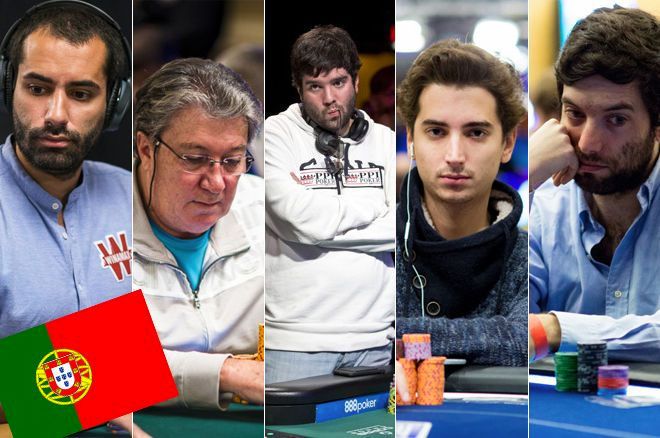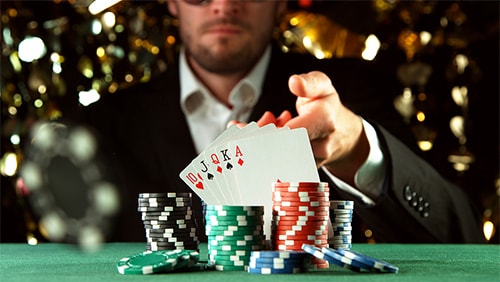Pro Poker Players
- See Full List On Globalpokerindex.com
- Top 10 Poker Players - Most Successful Players In The World
- Pro Poker Players Named Phil
- Pro Poker Players Net Worth

Commercial content T&C apply Please play responsibly 18+
Chris Moneymaker is the newest ACR Team Pro! The man who ignited the online poker revolution, Chris Moneymaker, is now an Americas Cardroom Team Pro as of February 2021. His claim to fame started in 2003 when he qualified for the WSOP Main Event via an online satellite and shocked the world by winning the title and the $2.5 Million prize.
Poker is a game of extreme variance. Professional poker players can go stretches without winning or placing at a level that earns any cash. The wins, however. Professional poker player Susie Zhao was bound with zip ties, sexually assaulted and “lit on fire” after meeting a convicted sex offender at a motel the night before her badly burned body was. Players: 643,664 Screened events: 266,786 Latest Weekly Update: 6 Jan, 2021 Next update today.
Bear in mind that poker games are prohibited in Australia. Therefore, this is solely informative content and no poker offers can be found on this website.
What would poker be without the spine-chilling feeling of possibly losing it all in the blink of an eye?
For all players, this emotional and financial roller-coaster is what makes the game worth playing. But only professional ones can bust thousands of dollars while keeping it totally cool.
If you’re freaking out when you lose a couple hundred bucks while gambling, wait until you find out how much these five professional players lost!
Estimated losses: $5 million
Gavin Griffin marked poker history as the youngest player to win a WSOP tournament, snagging the Pot Limit Hold’Em in 2004. He also won the prestigious Triple Crown, followed by an EPT in 2007 and 2008. In 2012, his total live winnings approached $5 million.
However, Griffin fired out most of this money. Alongside the cost of playing in live tournaments and the high Californian taxes, he developed a gambling addiction that cost him heavily.
He eventually had to step down several levels and go back to the lower stakes tables in order not to go completely broke.
Estimated losses: $18 million
Gus ‘The Great Dane’ Hansen has always been famous for his crazy swings: after having won four WPT’s in a year and made six final tables, amassing over $11 million, the Danish player hit rock bottom in 2014.
His losses on Full Tilt surpassed $20 million in September, losing as much as $630,000 in a week alone! He managed to get a little bit ($1.2 million) back, but with total losses of -$18 million, the man set the record of online poker losses.
If a reasonable reaction would be to curl up in fetal position and start crying, the Great Dane kept it cool, declaring : “I still have money in my pocket. My online numbers aren’t looking too pretty, but I can still afford a sandwich.”
Many professional players might have gone broke, but few with quite the same laid-back attitude.
Estimated losses: $20 millions
Of all the poker pros who went broke, Scotty Nguyen embodies the genuine old school poker legend: weird gambling superstitions, memorable punchlines, amazing bluffing skills and terrible drinking habit.
When he emigrated from Vietnam in the eighties, Scotty started earning a living by bussing tables at a restaurant. Tired of being treated poorly by his employer, he eventually decided to quit, with a $270 pay check in his backpack. He took his money to Lake Tahoe where he started playing poker and turned it into a six figures bankroll within a week.
Until the end of the nineties, Scotty reached the poker heights, winning over $11 million in career tournament earnings. Unfortunately, his multiple addiction problems started to take over and he soon hit a losing streak that left him broke.
Estimated losses: $25 millions

Former member of Team Full Tilt and two-time WSOP and WPT winner, Erick “E-dog” Lindgren counts among the poker players who made the most money of all time: as of 2016, he ranks 38th in the All Time Money List of poker with over $10 million in tournament earnings.
Unlike other poker legends often known for their excesses, Lindgren impersonated, with his friendly demeanor and pleasant table manners, the average Joe who was living the poker dream.
Sadly, Lindgren developed a severe gambling addiction which lead him to file bankruptcy several times and become. He is deeply indebted to Pokerstars (-$2.5 million), the IRS (-$3.8 million), Andy Bloch (-$1.1 million) and many other players (-$5 million).

In 2013, Erick Lindgren entered a rehab program for gambling addicts in California.
Estimated losses: $30 millions
Stu Ungar is widely regarded as the best poker player of all times. Thanks to his uncredible I.Q. and photographic memory, “The Kid” managed to win the WSOP Maint Event three times in 1980, 1981 and 1997.
However, because of poor money-management skills and a devastating addiction to cocaine, he fired out all of his earnings.
Despite having won about $30 million during his poker career, The Kid died with no assets to his name, making him the ultimate king of all the professional players who went broke!
Which poker stats are most important?
Our poker HUD software offers a large amount of statistics. Knowing which ones are relevant and important can be overwhelming. If you are new to poker software you can initially ignore all statistics except the essential three poker statistics. Once you have understood how to use the basic statistics, you can add more depending on your style of play, and your chosen table size.
The big three poker statistics (and one bonus stat):
- Voluntarily Put $ in Pot (VPIP)
- Preflop Raise (PFR)
- Postflop Aggression Frequency (Agg)
- A bonus stat: Big blinds won/100 hands.
These three statistics are a great starting point to get an idea of a person’s playing style. They only require 25 hands or so to reliably give a good idea of a player's tendencies.
Voluntarily Put $ in Pot (VPIP)
VPIP in poker measures how often you voluntarily pay money into a hand before seeing the flop. Paying the big blind, the small blind, or the ante is not considered voluntary. Therefore this percentage indicates how often you called, bet, or raised. The lower this value, the tighter your hand selection is. The higher, the looser. Only preflop betting is taken into account.
Good players know to only invest money in the pot when they have decent starting hands. A simple way to measure whether you are doing this is to keep your VPIP at a sensible value.
What is a good number for VPIP?
Simple answer: between 15% and 20%. This assumes you want to play tightly, you are playing micro-stakes, and you are playing on full ring cash tables.
Now the more complicated answer: it depends a lot. If you are still learning to play good poker, then you should be very selective in which hands you play, so your VPIP might acceptably be a tad lower than 15%. The less people on the table, the more hands you can play. If you are on a table full of ultralight players, you can also loosen up. An experienced player who understands the subtleties of the game can get away with a VPIP between 20% and 27%. In 6-max or heads-up, most players have a much higher VPIP. In Pot Limit Omaha, VPIP values will be even higher.
Preflop Raise (PFR)
The PFR statistic indicates how often you have raised before the flop is seen. A high value is an indicator of an aggressive player. A low value indicates a passive player. Good players are aggressive players.
See Full List On Globalpokerindex.com
Your PFR has a possible range between a minumum of 0% and a maximum equal to the value of your VPIP. That is, if your VPIP is 20%, then your PFR can’t be higher than 20%. Ideally it should be a little lower than your VPIP, but not much lower.
Poor players and beginners play timidly. They call too often preflop. Good players frequently fold or raise preflop, especially if no other players have yet raised. If you are not prepared to raise, then you should consider folding. Calling preflop just in case the flop is good for you is not a winning poker strategy.
What is a good PFR range?
Between 2% and 3% lower than VPIP. If your VPIP is 15%, PFR should be about 12%. These two numbers in combination indicate that you are only playing quality hole cards, and you are predominantly raising with them pre-flop. In other words, you are playing how most poker books and poker forums say you should play.
Postflop Aggression Frequency (Agg)
Top 10 Poker Players - Most Successful Players In The World
Agg indicates how aggressively you play postflop. The higher this number, the more aggressively you are playing. This must be interpreted in combination with VPIP. Players who see very few flops will naturally tend to have a higher aggression percentage because they are only playing top-quality hole cards.

Poor players play passively postflop. They’ll check or call too often. Good players know to play good hands aggressively postflop:
- because players with speculative hands are forced to fold before they get free cards
- because if they hit the flop or have a dominating hand, a bet or raise will increase their return
What is a good Agg range?
50% to 60% is ideal, assuming that you have a VPIP of 15% to 20%. Much higher, and you are probably overplaying speculative hands and bad hands, and bluffing too much. Much lower and you are not playing your good hands strongly postflop.
Leave the bluffing for the movies and for live play. At low stakes online play, bluffing is much less important than a good understanding of the probabilities of winning hands.
Pro Poker Players Named Phil
Big blinds won/100 hands
Pro Poker Players Net Worth
The three stats I've presented so far mean nothing if you can't keep your win rate positive. A nice way to 'normalize' your win rate across different stake levels, table sizes, and opponents is to measure how much you won in terms of the big blind. If you are playing at a table where the big blind is $0.50, and you won $20, then think of this as winning 40 big blinds.
If this number is not positive, then you are losing money. The best remedy is to drop to a lower stake level, where the opponents are weaker. If, according to this stat, you consistently win over time, then you should consider going up to a higher stake level.
Adjusting your play based on the villain's poker stats
This is where our poker HUD software gets really useful: analyzing and exploiting opponent weaknesses. Let's consider some hypothetical players:
Tight Tim has VPIP of 5%, PFR of 5%, and Agg of 100%
With such a low VPIP, we can guess that this player folds anything except the very best hands. And with a PFR equal to VPIP, when he gets premium hands, he raises. So if this player raises, and you are next to act, you know that you should fold every hand except the best few hands, such as AA, KK, QQ. You can be almost certain that if you go to the flop, he'll raise postflop. So play tighter than usual with this player. But when you do get a premium hand, and he comes along, you can be sure that player B will put plenty of chips into the pot. Your pot, hopefully.
Passive Pete has VPIP of 20%, PFR of 16%, and Agg of 10%.
This player seems take have a good handle on preflop play. But when he gets to the flop, he gets timid. He is probably going to give you a chance postflop to see the turn and river for free. If you go to the flop with him and raise, there is a good chance he'll fold. So you can play a bit more aggressively both preflop and postflop.
Eddie the Eagle has VPIP of 22%, PFR of 19%, and Agg of 55%.
Eddie has a good all-round balance between preflop and postflop play. Preflop, he plays tight and aggressively. Postflop, he balances between pushing hard with his good hands, and being willing to fold or check with his weaker hands. Eddie would be well-served to move on to understanding more advanced poker statistics.
Tracking your poker stats
Poker players use poker software like Poker Copilot to automatically record their hands. Each hand is broken down into many statistics, which are then aggregated into simple percentages.

Poker Statistics Guide
What’s next after you’ve understood the basic poker stats? Read our Poker Statistics Guide for a comprehensive explanation of understanding and using all the main poker statistics.